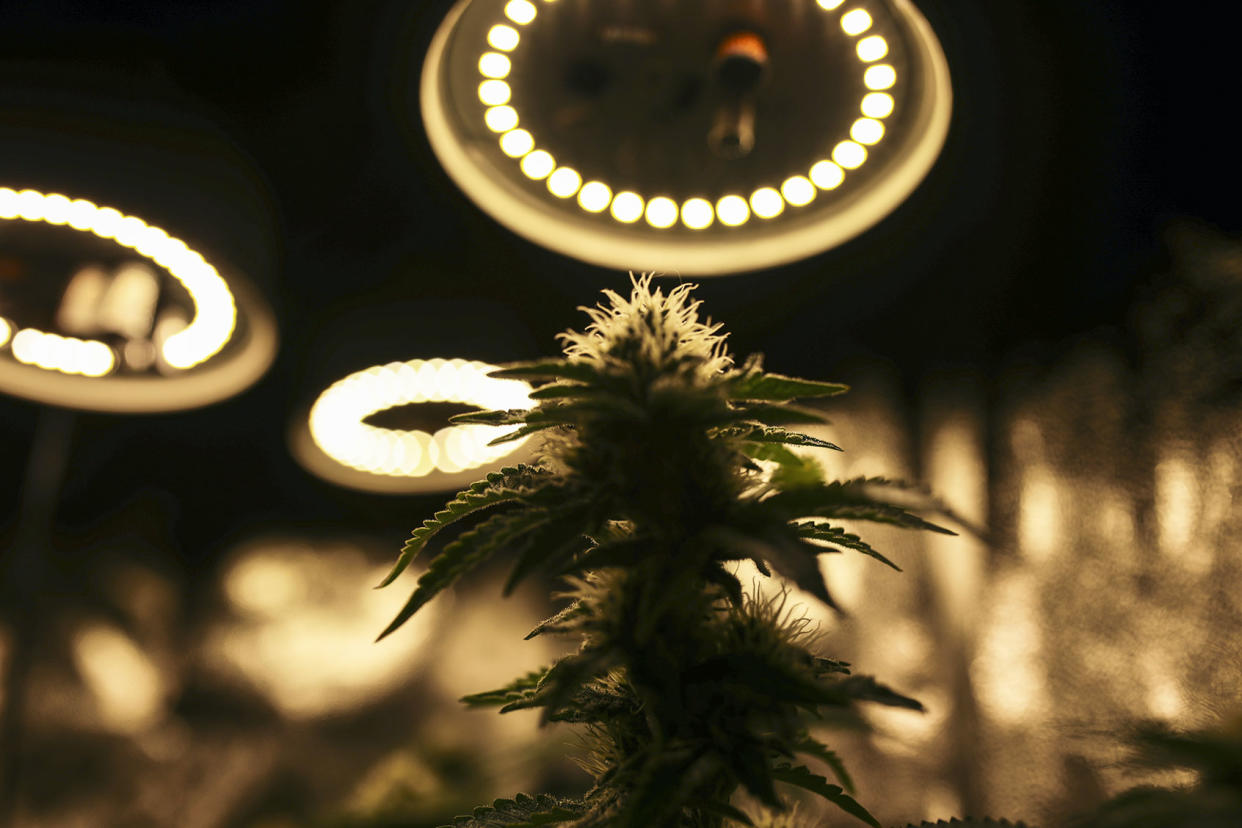Is cannabis actually green? Experts unpack the climate impacts of weed's rising popularity

Cannabis is one of the fastest growing industries in the world, this year estimated to rake in more than $64 billion globally as more and more regions unravel marijuana prohibition. Germany became the third European country to legalize weed on April 1 this year, though only in limited amounts, while voters in states like Florida and Nebraska may decide to legalize the plant, potentially joining the roughly 74% of Americans who live somewhere cannabis is legally sold.
While the drug has a long history of villainization due to racist and anti-scientific drug policy, most people today recognize the drug is safer than alcohol and tobacco (though certainly not harm-free) and that prohibition fails to accomplish much aside from feeding the prison-industrial complex.
Marijuana, whether medical or recreational, is big business, and as is typical with large industries, that means it has outsized impacts on the environment. Much of the modern cannabis industry relies on unsustainable agricultural practices. This means, in effect, that the world's favorite green drug can have a decidedly un-green carbon footprint.
In 2021, researchers from Colorado State University analyzed the greenhouse gas emissions (GHG) generated by cannabis as it is typically grown throughout the United States. Their study in the journal Nature Sustainability indicates that indoor cannabis production is energy intensive and leaves a significant carbon footprint. Depending on one's location, cultivating just a single kilogram of cannabis indoor releases between 2,283 and 5,184 kilograms of carbon dioxide equivalent.
"The significant energy requirements and GHG emissions associated with indoor cannabis production imply that as energy costs and environmental regulations become stricter in response to climate change, the costs associated with cannabis production could increase," said corresponding author Dr. Jason Quinn, operator director of Colorado State's Energy Institute. In addition to worsening global warming, Quinn said these conditions could ultimately reduce marijuana quality and make it more expensive.
Even advocates of responsible cannabis use recognize the climate change risks associated with the plant. Dr. Peter Grinspoon, a cannabis specialist and instructor at Harvard Medical School, said that while cannabis is viewed by some as natural and healthy "it does, indeed, have a large carbon footprint."
Citing the Natural Sustainability article, Grinspoon noted that the more sustainable practice of outdoor cultivation may become difficult as Earth's temperatures continue to increase.
"Sunny, outdoor areas to grow cannabis, in places across the globe, are becoming too hot, dry [and] desertified to sustain vegetation," Grinspoon said. "This will worsen every year that we fail make progress on carbon emissions. Also, increasingly, there are droughts and competition for water resources, which farmers need to grow cannabis outside."
That problem factors into the cost of marijuana, which both Quinn and Grinspoon predict will rise as our planet continues to heat. The good news is that this problem is solvable.
Want more health and science stories in your inbox? Subscribe to Salon's weekly newsletter Lab Notes.
"Yes, there are ways to grow cannabis and be mindful of the environment," Janice Mackey, information officer at the California Fish and Wildlife Department (CDFW), told Salon. "Those in the regulated market work with state regulators to limit environmental impacts with their cultivation activities. Even the smallest adjustments can make a big difference on the ecology of a farm."
Mackey added that CDFW has a cannabis grant program that assists farmers with projects like conserving water, improving roads and protecting habitats. When farmers have gone above and beyond compliance requirements, the CDFW has profiled them for their achievements.
"CDFW is committed to working with cannabis cultivators of all sizes to help them navigate through state regulations," Mackey said. "CDFW’s Cannabis Program consists of permitting, enforcement, grants, land stewardship, environmental monitoring and outreach — all in an effort to protect the environment and help the regulated market succeed."
Grinspoon said that as long as cannabis is cultivated outside, the plant will have a lower carbon footprint since there will be less of a need for the use of electricity or natural gas.
"It is also important to regulate pesticides and nutrients so that the cannabis isn't contaminated, nor is the groundwater," Grinspoon said. "There also is produced a lot of plastics and other waste, particularly in the packaging, which can be improved."
Legalizing marijuana will make it easier for the government to effectively regulate the industry so that it is environmentally sound. That's because criminal grow operations typically don't care if it causes pollution or how much energy they consume.
"As cannabis becomes legal, it will be more coherently regulated, and it will be much easier to safely and effectively institute environmental regulations on the production and distribution of cannabis," Grinspoon said. "It also becomes a lot safer for consumers as the cannabis itself is tested and regulated for mold, heavy metals, fungus, dangerous pesticides, etc."
If one must cultivate marijuana indoors, the Nature Sustainability paper urges them to do so with energy-efficient technologies like LED lights and high-efficiency HVAC systems, both of which significantly reduce greenhouse gas emissions. The paper also suggests optimizing air charges per hour to reduce energy consumption. At the same time, the paper emphasizes that growing marijuana outdoors is much preferable from an environmental standpoint.
There is at least one other reason to grow marijuana outside, assuming climate change does not make that unfeasible. Planting marijuana crops outdoors may do more than minimize the crop's negative effect on climate change; it might actually help reduce climate change itself. Research scientists from Hudson Carbon, a New York-based research center which studies carbon storage, found that hemp cultivation is "carbon-negative," meaning that it stores more carbon than it emits.
“Roughly speaking, if [the US] did 50 million acres of hemp, we would be sequestering a couple hundred million tons of carbon per year on that acreage,” Ben Dobson, the founder and president of Hudson Carbon, told Earth.com.

